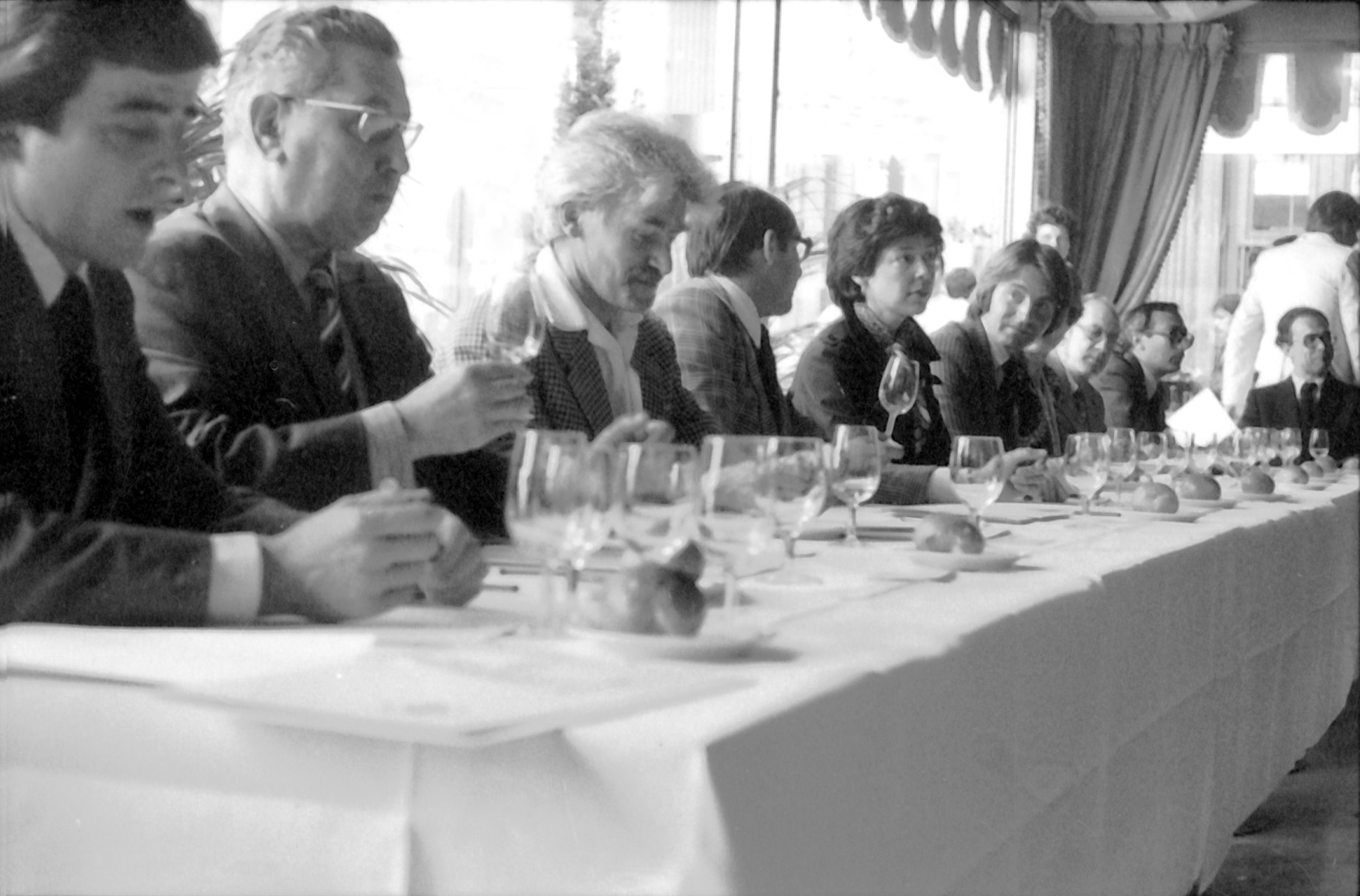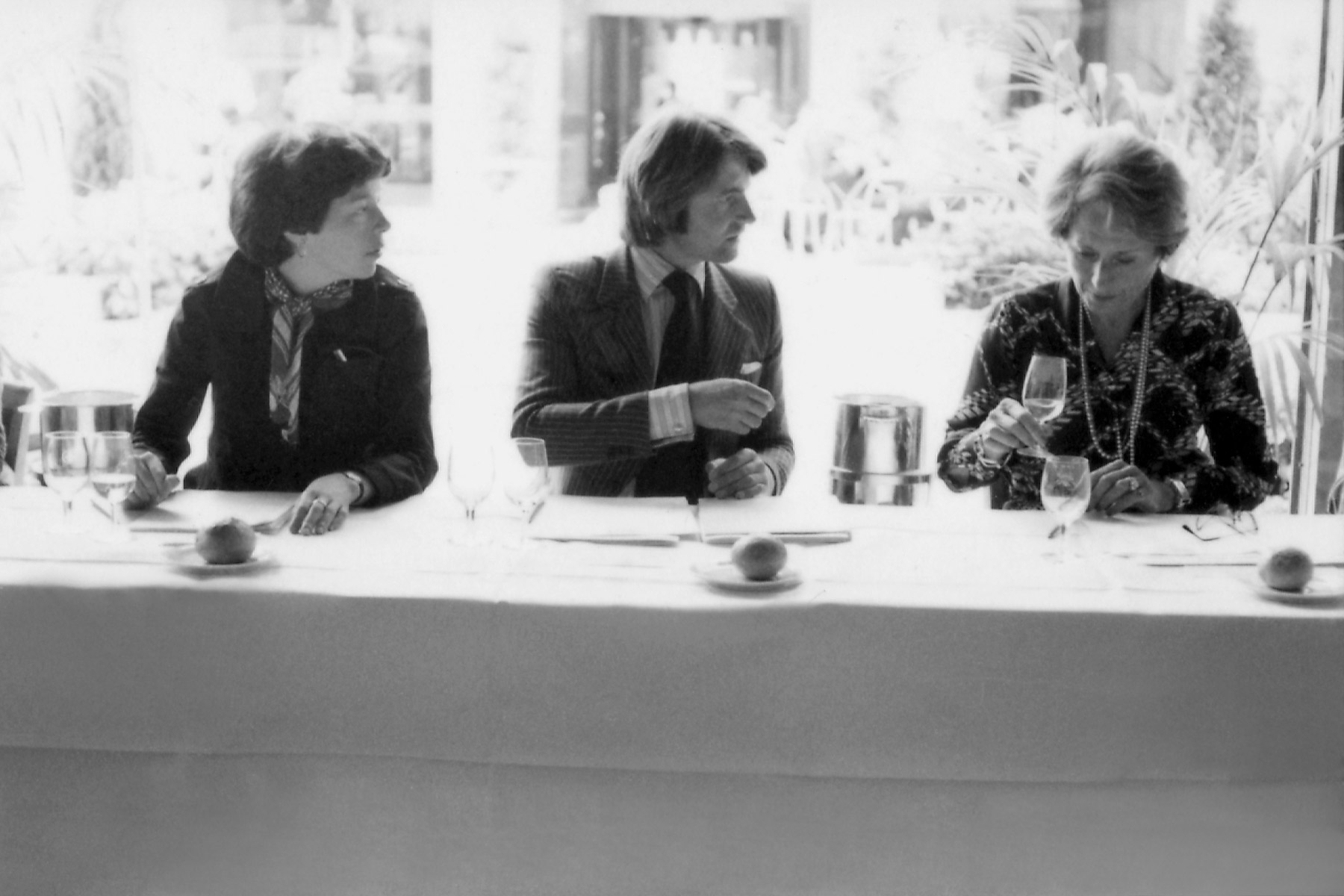
Before 1976, the words “judgment of Paris” called to mind a story in Greek mythology: Paris, son of a king, is asked to decide which goddess is the fairest. When Paris is swayed by Aphrodite’s promise to bestow the exquisite Helen of Troy upon him, it starts a chain of events that leads to the Trojan War and the fall of a city.
And so those three words made a trenchant headline, written by an unknown editor, to describe a contest held 40 years ago Tuesday, which would eventually topple another king—and change the world of wine.
“Everybody turned [the invitation] down. I turned it down the first time,” says former TIME reporter George Taber, the only journalist to show up on May 24, 1976, for a blind tasting of the finest French vintages and wines from upstart Napa Valley. “Everybody knows that French wines are going to win, so why waste a day? It’s the giant and the little guy. Nobody took it seriously.”
“California wine did not exist”
Though the French hoisted themselves on their own petards that day—because the judges who sipped and scored the whites and reds were among the most reputed oenophiles that country had to offer—the story began with a British man named Steven Spurrier, who ran a wine shop in Paris and the only private wine school in France. Because Spurrier and his team spoke English, winemakers from California’s Napa Valley would often pass through with their wares in tow.
How was California wine viewed back then? “California wine was not viewed. California wine did not exist,” says Spurrier, in his British brogue, from his home in England, where he eventually returned to work as a wine consultant and writer. Back then, even Americans weren’t drinking much besides fortified dessert wine, industry experts say, and were largely oblivious to what Taber described in his story as “rather expensive ($6 plus)” bottles of Cabernet Sauvignon and Chardonnay being produced in the vineyards operating north of San Francisco.
If Americans were oblivious, the French acted as if there weren’t even anything to be oblivious to. “The French bamboozled the world into thinking that only in France could you make great wines, that only in France did you have the perfect climate, the perfect earth, the perfect grapes,”says Taber, now 76 years old and splitting his time between Rhode Island and Florida. “France was on a pedestal. France was alone.”
And yet, when Spurrier tasted the American wines that found their way to his shop, they didn’t just exist—they were good.
An Englishman in Paris
So Spurrier quickly agreed when his colleague, a woman of American heritage named Patricia Gallagher, came up with the idea of hosting a tasting of California wines in Paris to mark the bicentennial of the American Revolution. Though he says he did not need the publicity (contrary to plot line in the movie Bottle Shock, which clearly still rankles him), he did feel what might be described as a sense of wine justice.
“I was an Englishman in Paris, I was already a square peg in a round hole,” he says. “And these were very, very good wines. So why don’t we do something about it?”
After Gallagher scouted Napa wineries in 1975, Spurrier returned the following year with her notes to make the final selection, settling on six California Pinot Chardonnays and six California Cabernet Sauvignons. He gathered his distinguished panel of judges and secured a room at the Intercontinental Hotel for an afternoon. Then, about two weeks before the tasting, he had the idea that would make the day historic instead of just a pleasantly passed Monday: to make the judges pay attention to the California wines, he would offer them alongside the top wines for Bordeaux and Burgundy, as a blind competition.
Get your history fix in one place: sign up for the weekly TIME History newsletter
“Ah, back to France!”
Ted Baseler now heads the company that owns Stag’s Leap Wine Cellars, a Napa winery whose 1973 Cabernet Sauvignon was tasted that day, and he describes what came next as “the ultimate underdog story.” As Taber explained at the time:
The contest was as strictly controlled as the production of a Chateau Lafite. The nine French judges [were] drawn from an oenophile’s Who’s Who … The wines tasted were transatlantic cousins—four white Burgundies against six California Pinot Chardonnays and four Grands Crus Chateaux reds from Bordeaux against six California Cabernet Sauvignons.
As they swirled, sniffed, sipped and spat, some judges were instantly able to separate an imported upstart from an aristocrat. More often, the panel was confused. “Ah, back to France!” exclaimed [one judge] after sipping a 1972 Chardonnay from the Napa Valley. “That is definitely California. It has no nose,” said another judge—after downing a Batard Montrachet ’73 [from France]. Other comments included such Gallic gems as “this is nervous and agreeable,” “a good nose but not too much in the mouth,” and “this soars out of the ordinary.”
The whites were tasted first, and Spurrier announced before the red tasting that the judges had given top scores not to a Burgundy wine but to the ’73 chardonnay from Chateau Montelena, a boutique vineyard in Calistoga, Calif.

Mike Grgich, a native Croatian who made that vintage, says he didn’t even know about the tasting until after it happened. Even then, he says he didn’t understand it mattered until the New York Times called wanting to take his picture. “I started dancing around the winery and singing in Croatian that I was born again,” he recalls. “It was a miracle!”
The French judges were not so elated. Spurrier recalls believing that they were determined to pick a French winner from among the reds. Taber, who has written a book on this “judgment of Paris” and its significance, believes the same. (One particular red that Taber believes was easily identifiable as non-native, Taber says, received two points out of 20—”worse than battery acid or something.”)
Whether those judges made their choices based on merit or ulterior motives, they soon heard, to their absolute dismay, that they had done it again: the top-marked red was the cab from Stag’s Leap, a bottle that the Smithsonian honored as one of 101 objects that “made America,” alongside Meriwether Lewis’ compass and Alexander Graham Bell’s telephone.
At the time, however, no one really had a sense of quite how big a deal the win would be. When Taber called up Jim Barrett, the general manager and part owner of Chateau Montelena, the vineyard that produced the winning white, Barrett had no idea that he had won. “Not bad,” he said, “for kids from the sticks.”

“A kick in the pants”
The tasting put Napa “on the map,” and boosted other areas of California now heavy with wineries, like Sonoma County and the Central Coast. Investment started rolling in, as did French people who traveled to the Pacific Coast to see what it was all about. What they found was that there was fine terroir outside France: fast-draining soil, plenty of sunlight, a climate that’s not too hot but not too cold. The first vintage of Opus One, a wine that prides itself on establishing the “ultra-premium” category in America, was produced in 1979. Spurrier believes it’s no accident that this collaboration—between American winemaker Robert Mondavi and French winemaker Philippine de Rothschild—had not happened earlier.
The number of wineries in California is today above 3,000, up from little more than 300 in the 1970s.
And the sound of France’s pedestal crumbling was heard beyond the Pacific Coast. “The most important thing in my view is the judgment of Paris created a template whereby unknown wines of high quality could go up against known benchmark wines of high quality, blind, provided they were in front of an incredibly reputable panel of judges,” says Spurrier. Davids from all over felt power to take on Goliaths. It was a great democratizing moment for vintners.
“It opened up the doors not only to Napa but other regions in the world,” says Stag’s Leap Wine Cellars’ Baseler. “That helped other people say ‘Gee, we can too,’ whether it was in New Zealand, Australia, Oregon, Washington, Chile.” Perceptions among people buying and collecting wine, shifted, too. And with France forced off its laurels, everyone felt a greater sense of competition, industry veterans recall, which meant the world was getting and continues to get more variety and innovation in its vino.
There were some casualties. The owner of the greatest Burgundy estate in France, according to Spurrier, told him that the judgment of Paris “was a kick in the pants for French wine.” Spurrier got kicked out of cellars where he was once a welcome customer, blamed for organizing France’s humiliation, and several of the judges were asked to resign from positions of honor and recognition.
Taber was spared any blowback he might have received. At the time, TIME Magazine did not print bylines on stories like the one he filed. Yet in a way, as he was the single journalist to show up that day, the four paragraphs he wrote are the most responsible for the fallout and the progress: he’s the reason that the story got out. “That’s why this became such a phenomenal thing,” says Baseler, why today everybody knows “well made wines are great wherever they come from.”
Read TIME’s original coverage of the contest, here in the TIME Vault: Judgment of Paris
More Must-Reads From TIME
- The 100 Most Influential People of 2024
- Coco Gauff Is Playing for Herself Now
- Scenes From Pro-Palestinian Encampments Across U.S. Universities
- 6 Compliments That Land Every Time
- If You're Dating Right Now , You're Brave: Column
- The AI That Could Heal a Divided Internet
- Fallout Is a Brilliant Model for the Future of Video Game Adaptations
- Want Weekly Recs on What to Watch, Read, and More? Sign Up for Worth Your Time
Contact us at letters@time.com